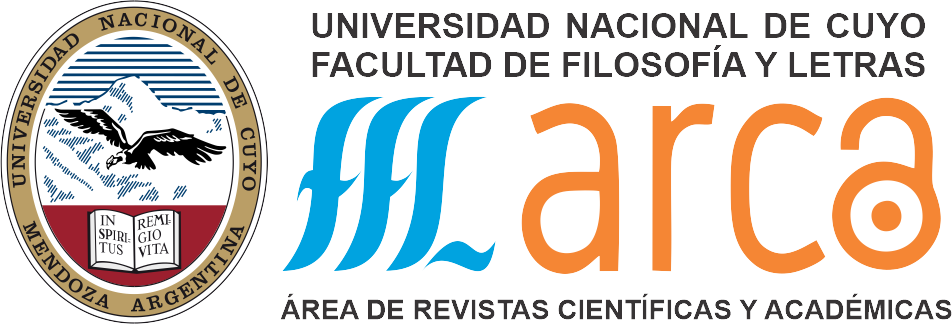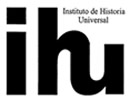
Proceso de evaluación por pares
Preliminarmente, los trabajos son evaluados por el Comité Editorial a fin de determinar si el tema se ajusta a los intereses temáticos y metodológicos declarados por la revista. Cuando esta primera evaluación es positiva, se eligen dos árbitros o referencistas nacionales y/o extranjeros, especialistas del ámbito correspondiente a su contenido para evaluar la calidad de la contribución. Para la selección de los evaluadores se tendrá en cuenta el área de investigación correspondiente al contenido y la filiación institucional a fin de garantizar la competencia, imparcialidad y objetividad del veredicto.
El proceso editorial, desde el envío del manuscrito hasta su aceptación para ser publicado, se realiza a través del gestor editorial OJS (Open Journal System). Los autores deben subir sus trabajos a la web de la revista y desde allí podrán seguir cada etapa del proceso editorial.
Todo artículo presentado para su publicación debe ser original e inédito, pueden poseer dos co-autores como máximo y no deberá estar postulado simultáneamente en otras revistas u órganos editoriales. La contribución debe seguir las Directrices generales para autores y las Normas para citas y referencias. El referato es anónimo y externo. Para asegurar el anonimato, se deben enviar dos copias. Una con los datos del autor. La otra sin ningún dato que identifique al autor, lo cual es imprescindible como garantía de transparencia y objetividad. Por tanto, la copia anónima no deberá consignar autor. A su vez, las notas de agradecimiento y las referencias a proyectos de investigación o presentación a encuentros académicos no deberán consignarse en la copia anónima destinada a los evaluadores.
El sistema de evaluación adoptado por la revista es de doble ciego (se mantiene el anonimato de los autores y los evaluadores). Los trabajos postulados podrán ser: (a) aceptados, (b) aceptados condicionalmente o (c) rechazados. En el caso de que las opiniones difieran y se dé un dictamen dividido (esto es, que uno de los evaluadores rechace el trabajo y que el otro lo acepte), se solicitará el arbitraje de un tercer especialista para dirimir el desacuerdo.
El proceso de revisión tendrá una duración aproximada de 1 mes (podría extenderse el plazo en casos extraordinarios). Sobre la base de los informes de los evaluadores los editores comunicarán al autor, mediante un correo electrónico, la decisión adoptada, la cual será inapelable.
En el caso de que un artículo esté aceptado, se podrán solicitar modificaciones menores y/o de forma para cumplir con las pautas indicadas en las Directrices generales para autores y las Normas para citas y referencias, modificaciones que el autor deberá realizar en un plazo de un mes (30) días como máximo.
En el caso de que el artículo esté aceptado condicionalmente, se remitirán los comentarios de los referencistas a los autores, quienes contarán con un plazo máximo de un mes (30 días) para realizar los cambios correspondientes (si dicho plazo resultara insuficiente, se podrá solicitar una prórroga de un mes (30 días adicionales) justificando las razones que imposibilitan la modificación de los comentarios en el plazo estipulado). Una vez realizadas las correcciones, los autores deberán enviar una nueva versión del manuscrito. La nueva versión será remitida a los evaluadores originales para que evalúen si el trabajo será aprobado o rechazado, decisión que se comunicará inmediatamente a todos los autores.
Cuando el artículo ha sido aceptado y se tiene su versión final, inicia el proceso editorial de la Revista de Historia Universal, en el que se revisa que exista adecuación a las normas estipuladas. Comienzan, asimismo, las tareas de edición, corrección de estilo, el diseño y, por último, la publicación.
INFORME DE ARBITRAJE
Planilla de evaluación de artículos
Título del Artículo
- ¿El trabajo puede considerarse un artículo o una nota?
- ¿El escrito es original? ¿Contribuye al conocimiento del tema propuesto?
- ¿Está correctamente escrito o debe reformarse? En este último caso indique cuáles son los errores principales (de ortografía, de sintaxis, repeticiones excesivas, frases ininteligibles, etc.).
- ¿Cuál es su recomendación respecto de la publicación del trabajo?
- a) Aceptarlo tal cual está en cuanto al contenido pero efectuar las modificaciones de estilo sugeridas en el texto.
- b) Aceptarlo condicionalmente. El autor deberá revisar los puntos sugeridos en 5. La evaluación de tales cambios quedará a cargo del Comité Editorial, que tan sólo en caso de dudas importantes lo consultará nuevamente.
- c) Rechazarlo, pero ofrecer al autor la oportunidad de volver a evaluarlo si revisa el trabajo de acuerdo con los lineamientos sugeridos en el punto 5. En este caso, usted deberá revisar de nuevo el trabajo.
- d) Rechazarlo por las razones estipuladas en el punto 6.
- Críticas y sugerencias (responder en caso de haber seleccionado las alternativas b o c).
- Razones del rechazo (responder solo en el caso de haber seleccionado la alternativa d).
- Agregue cualquier otro comentario que considere pertinente y no esté contemplado en la planilla.
















